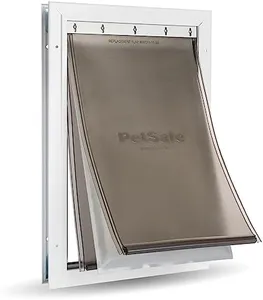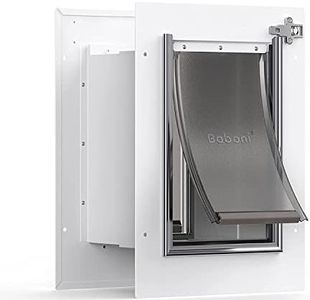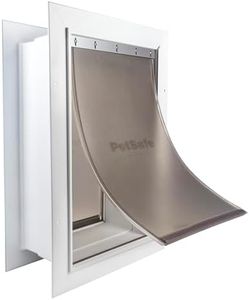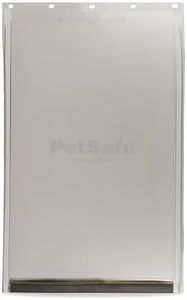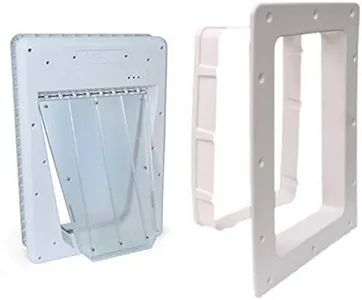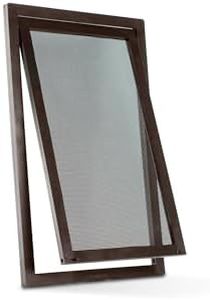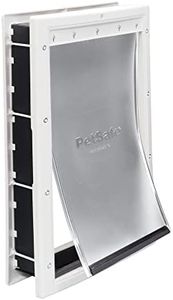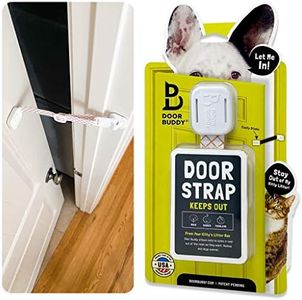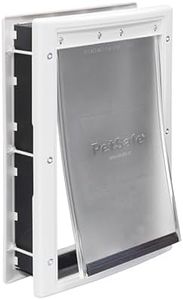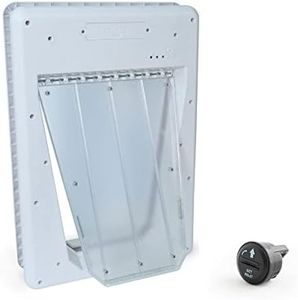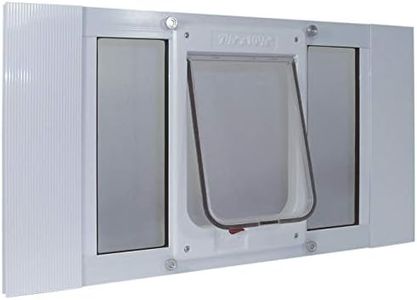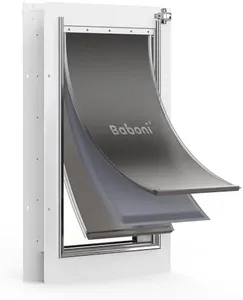We Use CookiesWe use cookies to enhance the security, performance,
functionality and for analytical and promotional activities. By continuing to browse this site you
are agreeing to our privacy policy
How do we rank products for you?
Our technology thoroughly searches through the online shopping world, reviewing hundreds of sites. We then process and analyze this information, updating in real-time to bring you the latest top-rated products. This way, you always get the best and most current options available.

Buying Guide for the Best Pet Doors
Choosing the right pet door for your furry friend can make life easier for both you and your pet. A pet door allows your pet to come and go as they please, providing them with the freedom to explore and exercise while giving you the convenience of not having to constantly open and close the door. When selecting a pet door, it's important to consider several key specifications to ensure you pick the best fit for your home and your pet's needs.SizeThe size of the pet door is crucial because it needs to be large enough for your pet to pass through comfortably. Measure your pet's height and width to determine the appropriate size. Pet doors typically come in small, medium, large, and extra-large sizes. Small doors are suitable for cats and small dogs, medium for medium-sized dogs, large for larger breeds, and extra-large for very large dogs. Choose a size that allows your pet to move through the door without squeezing or struggling.
MaterialThe material of the pet door affects its durability and insulation properties. Common materials include plastic, aluminum, and composite. Plastic doors are lightweight and affordable but may not be as durable. Aluminum doors are more robust and can withstand heavy use, making them ideal for larger or more active pets. Composite doors offer a balance of durability and insulation, providing better energy efficiency. Consider your pet's activity level and the climate in your area when choosing the material.
Installation TypePet doors can be installed in various locations, such as doors, walls, or sliding glass doors. Door-mounted pet doors are the most common and easiest to install. Wall-mounted pet doors require more effort and tools but offer more flexibility in placement. Sliding glass door inserts are convenient for renters or those who don't want to make permanent modifications. Choose an installation type that suits your home's layout and your willingness to undertake the installation process.
Security FeaturesSecurity features are important to prevent unwanted animals or intruders from entering your home. Basic pet doors may have a simple locking mechanism, while more advanced models offer electronic or magnetic locks that only open for your pet. Some doors use microchip technology to recognize your pet's unique ID. Consider the level of security you need based on your location and the potential for unwanted visitors.
Energy EfficiencyEnergy efficiency is a key consideration, especially if you live in an area with extreme temperatures. Pet doors with good insulation help maintain your home's temperature and reduce energy costs. Look for doors with weatherproof seals, double flaps, or insulated panels. These features help keep the cold or heat out and prevent drafts. Choose an energy-efficient door if you want to minimize the impact on your heating and cooling bills.
Ease of UseThe ease of use of a pet door is important for both you and your pet. Some doors have flexible flaps that are easy for pets to push open, while others may have rigid panels that require more effort. Consider your pet's strength and mobility when choosing a door. Additionally, look for doors that are easy to clean and maintain. A door that is simple to operate and maintain will provide a better experience for you and your pet.
Most Popular Categories Right Now



